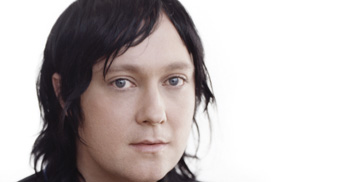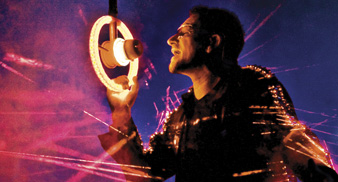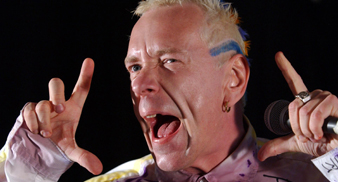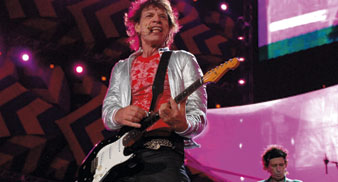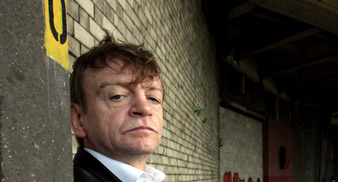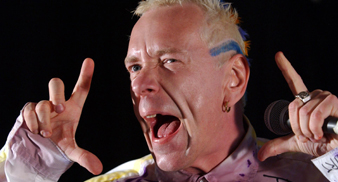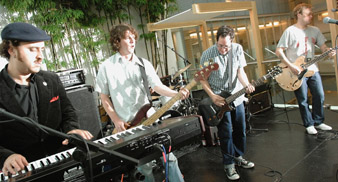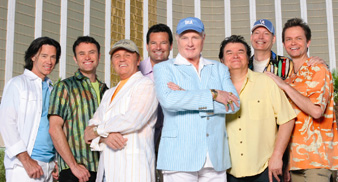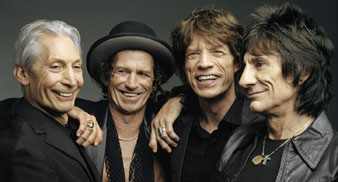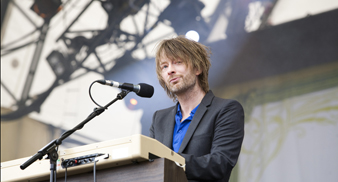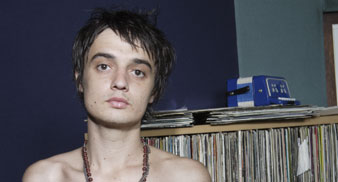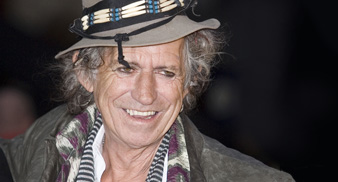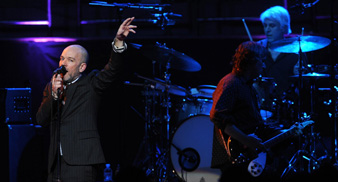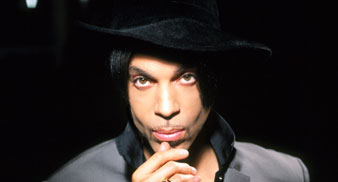A fairly inhospitable place to be on a Sunday night: just on the edge of the City, near Old Street roundabout, in the cellar of what used to be an almost permanently empty Chinese restaurant. This is the venue for, I think, only the second London show by Emeralds, a night subtitled “A Brave New World In Sound”.
First, though, at this Futureology #2 night, a couple of pretty fine support acts. Neon Pulse is a synth-jockey from Oxford, apparently, who starts off with some diffident, jazzy touches that seem to posit him as a kosmische Bill Evans. Soon enough, though, he starts piling on grainy beats and plenty of distortion, earmarking him as a fellow traveller to Fuck Buttons, though not quite so self-consciously epic in scope.
Dean McPhee I’ve already written about here, when I got hold of his “Brown Bear” EP. Live, his solo guitar is clear and unusually loud for this kind of thing, with a little bit of discreet delay backing up his calm, arcing melody lines. Last time, Nick and Matt both identified a certain kinship with Vini Reilly, which makes some sense again tonight: again, while it’s a kneejerk to bracket McPhee alongside players like James Blackshaw or Rick Tomlinson, he seems harder to categorise, less obviously schooled in the whole Takoma/New Primitive Guitar tradition.
Reilly comes to mind again, a little, watching Emeralds, as Mark McGuire bends into one filigree freakout after another. There’s another vintage Factory reference, too, in that there’s something here a little reminiscent of New Order circa “Lowlife”, specifically “Elegia”; a full-bore, saturated grandeur, at once celestial and overloaded.
It’s not, perhaps, the sort of comparison you’d expect to make, since Emeralds have been pigeonholed pretty tightly, alongside Oneohtrix Point Never, as part of a kind of New Age revival, a retro-futurist (or possibly hypnagogic?) trio with deep kosmische impulses: ambient music, after a fashion, for noise fans looking for something less abrasive.
That stereotype, though, doesn’t really do justice to exactly how rich and intense their records can be, this year’s “Does It Look Like I’m Here”, especially. And it definitely gets blown to pieces when Emeralds finally start their set. There are three of them: one guy studiously working his electronics; McGuire in the middle, an unlikely guitar hero swaying back and forth; and another electronics operative, with his back to the audience, who headbangs vigorously throughout. Occasionally, he’ll turn and check out the audience or his bandmates, and fiercely punch the air.
It’s quite a rock spectacle, and one that more or less suits the ramped-up music that they’re making. The Emeralds set lasts about 45 minutes, and works as one continuous piece, though it’s not, as I expected, an unfamiliar jam, but something which features recognisable pieces. For a start, they pile into a spectacularly pummelling “Genetic” from “Does It Look Like…”, all turbo-Bach arpeggios and a treatment of psychedelia that verges on punkish (with all the macho headbanging and air-punching, it’s a lot easier to figure out their Wolf Eyes-ish noise roots).
This goes on for the best part of 20 minutes, frantically looping round and round, as ornate as it is relentless. A lot of writers have compared McGuire’s playing – on his solo records too (the new “Living With Yourself” is great, if at times almost post-rock) - with the likes of Manuel Gottsching or Achim Reichel. But, less fashionably, there’s as much Mike Oldfield in there, too (maybe that’s just me: “Hergest Ridge” has been, unexpectedly, a big personal favourite these past few months).
Eventually, “Genetic” subsides into a long passage of percolating threat, before eventually it resolves into what may be “Now You See Me”, with McGuire turning in some really lyrical folk-rockish riffs that remind me of an old Michio Kurihara solo album I have somewhere. Came with a free guitar pick, if I remember right.
A fairly inhospitable place to be on a Sunday night: just on the edge of the City, near Old Street roundabout, in the cellar of what used to be an almost permanently empty Chinese restaurant. This is the venue for, I think, only the second London show by Emeralds, a night subtitled “A Brave New World In Sound”.


